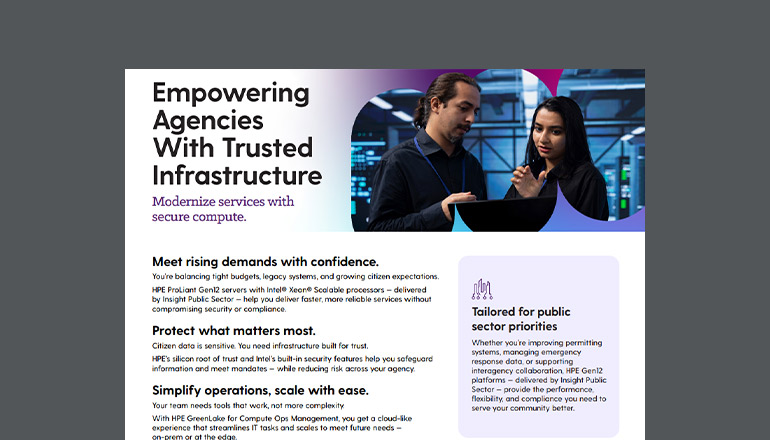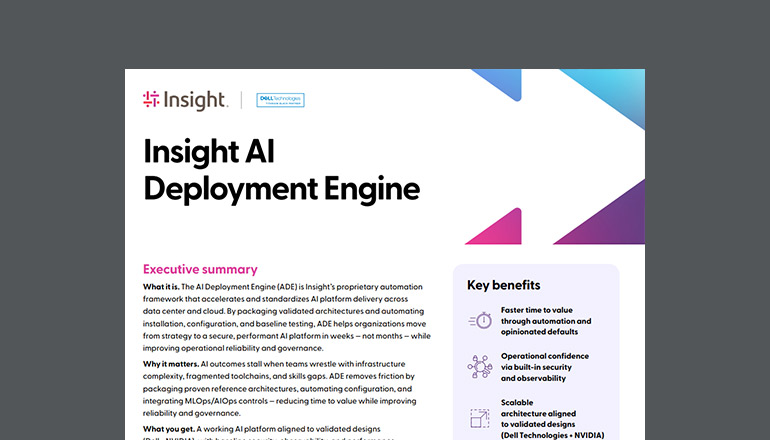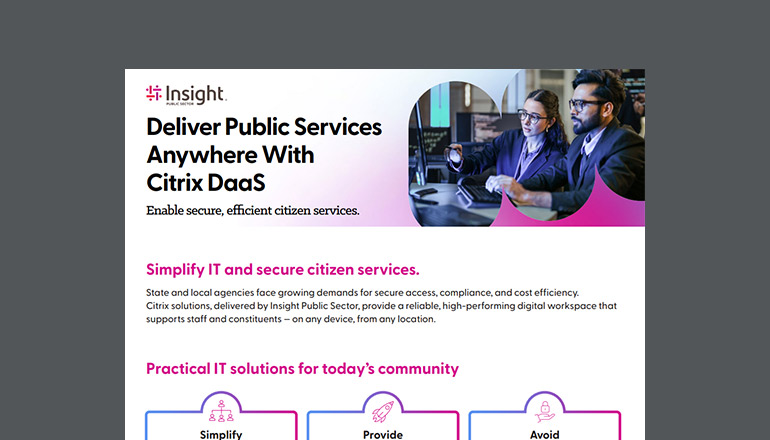Article S/4HANA – 10 Things To Do in Phase Zero
Your roadmap to a successful SAP S/4HANA implementation begins even before Phase One. Follow these 10 steps to ensure you get started on the right foot.
By Michele Snead / 15 Nov 2018 30 Nov 2020 / Topics: Agile Modern workplace Change and training Digital transformation

So, you’ve made the decision to adopt SAP S/4HANA®. Your implementation team has established a plan and a schedule, and all there is to do now is wait for the first phase of to launch before beginning the transformation process. It sounds logical, right? Wait for the plan to start before you get to work.
But ask yourself this: Would you leave on a long road trip without first packing the car and mapping a route to your destination? Of course not.
The time between making the decision to switch to S/4HANA and Phase One kickoff — otherwise known as Phase Zero — is time you should be spending in preparation for the journey. To help you get ready, here are the top 10 things your organization should do in Phase Zero of your SAP S/4HANA implementation plan:
1. Get Agile.
Take the time to train your workforce on Agile values and principles before you set off. Shifting your organizational mindset from a waterfall to an Agile approach before you begin your transformation will allow you to kick off and drive forward more quickly. It will also help you avoid having to restart and re-educate once your plan is in motion.
2. Document your current state.
Take the time to document all your business processes as they exist now. Ensure all processes are catalogued correctly by reviewing them with any members who you anticipate will be part of the implementation team. Decisions need to be made quickly on Agile projects, so having your processes match your applications reduces deliberation and will highlight any gaps in functionality aligned with core business activities.
3. Coach your leaders.
Spend time coaching your project leaders and IT teams on the goals of the implementation, as well as what will define success once the system is live. You’ll want to make sure they’re on board with your goal of leveraging best practices and model processes from the S/4HANA system.
Start with a documented decision-making process around any configuration changes so that you know when it’s acceptable to adapt the software to your process and when it’s better to adopt a new process to align with the software. Coaching your team will ensure you’re able to minimize the list of process areas that will truly be changed by SAP S/4HANA. Take time in Phase Zero to decide which processes make your business unique so that you can focus on those during implementation.
4. Train your team.
Understanding what SAP S/4HANA has to offer in terms of functionality and model processes is essential. If your team doesn’t exhaust all efforts to use the system out of the box without customization and reconfiguration, project budgets can rapidly increase, and timelines may quickly extend. This leads to missed expectations from your users, leaders, shareholders and customers. To prevent this, it’s important to invest in SAP project team training before the project begins. Establishing your own metrics, dashboards or assessments will allow you confirm that they’re all in the right mindset before starting your journey.
More insight: Making the switch to S/4HANA? Use the guidelines in our step-by-step infographic to simplify your Phase Zero preparations.
5. Select your tools.
Phase Zero is the ideal time to think about all the tools you’ll need to support your project. Most importantly, you should select a documentation tool and commit to using it throughout the entire implementation. Take the time to evaluate the tools which will need to be implemented and leveraged at each stage of the project. Your list may include:
- Sprint recordings
- Business process procedures
- Testing scripts
- End-user training
- End-user simulations
- Online collaboration
- Document repositories
- Training materials
- In-application support
- Performance support
Implementing these tools will take time, effort and thoughtful consideration. Bringing tools on board once you’re already full-steam-ahead on a project creates noise and diverts attention. Selecting them early on drives efficiencies throughout each phase of the implementation.
6. Gather your resources.
Subject Matter Experts (SMEs) are critical to any implementation, but their availability can present a challenge. Phase Zero is a great time to find some alternates who can help with discovery, review and approvals. You should also identify support personnel who can make themselves available to help with data capture during Sprints.
Your SMEs need to be knowledgeable about what the S/4HANA software offers. Since SAP S/4HANA hasn’t completely penetrated the market, relying on getting them up to speed during the project can prove problematic. Additionally, if you’re considering offshore models for any project-related tasks, availability of your SME must be taken into consideration. Phase Zero is the time to increase the SME bucket in your project plan or retain experienced consultants who can help to fill the gaps.
7. Plan your training.
Since the focus with S/4HANA is on leveraging the technology right out of the box, some business processes will inevitably have to change. This will be a new approach for many, so you’ll need to have a training plan in place before you begin — one that considers a multi-generational audience and balances the unique needs of your organization. Your goal should be to develop a sustainable training plan that builds value. We recommend using a blended approach that incorporates several methodologies:
- Instructor-Led Training (ILT)
- E-learning
- Virtual training
- Workshops
- Small groups
- Microlearning
- Gaming
- Reference managers
- In-application support
- Online help
- Performance support
- Mixed reality – VR/AR
Be realistic about your ability to provide training across your organization and confirm early on whether you can take on this task. Remember, your people’s first impression of the new system is important, so proper training plays a critical role in adoption. Because you’ll be facing changes to both your technology and business processes, consider bringing in superusers or facilitators to support your classroom training. These experts will help to balance technology and process training while reducing the burden on your internal personnel.
More insight: In this on-demand webinar, our SAP S/4HANA experts discuss the human side of change and share the secrets to success (or failure) with your implementation.
8. Prioritize your content.
You’ll find it helpful to prioritize content development based on the specific areas of focus within your organization. Don’t wait until the end of the project to start training your team in bulk. Instead, streamline your team and embed members throughout the project to address their areas of expertise. This will allow you to uncover needs or knowledge gaps as you go rather than all at once. It will also give outside consultants the ability to provide more value across a wider variety of areas.
9. Measure your progress.
Measuring the overall impact of your SAP S/4HANA implementation provides a barometer of success and helps to break down areas of resistance. Phase Zero is the time to establish five to seven Key Performance Indicators (KPIs) that will best demonstrate value for your business. Some popular metrics include:
- Distribution rates: The time it takes trucks to exit the warehouse pre and post system
- Error rates: The time and effort required to reduce defects
- Time to task: The time it takes for key repetitive activities
Because SAP S/4HANA engagements tend to be met with a degree of resistance, it’s important to ensure that all aspects of the human side of change will be measured. Use individual assessments, surveys, focus groups and informal meetings throughout the plan to identify areas of resistance. This will give you the information you need to address and overcome these issues quickly and effectively. Some key areas of measurement should include:
- Project readiness
- Leadership assessment
- Project team health assessment
- Manager or supervisor feedback
- Superuser feedback
- User feedback
- Training competency assessments
- Communication effectiveness
- Key business performance indicators
Frequent touchpoints will help you to confirm the direction for Organizational Change Management (OCM), communication and ongoing training.
10. Set your budget.
Perhaps the most important consideration when implementing SAP S/4HANA is the budget required for successful adoption. Budgeting the traditional 10–15% of total project cost may not be enough. The goal with S/4HANA is to use the solution as is with little to no customization. Adopting the technology means business processes, roles, and operations will change. This lowers costs on the technology side, but the additional time and training required to support the change will increase costs on the human side. It’s therefore important to budget for an OCM lead, a communications consultant and a training lead at minimum. These roles will help to drive the human side of change and ensure that all key considerations are included.
Keep in mind that OCM leads will often start at kickoff — sometimes even earlier — while training leads typically start three to four months into the project. When reviewing budgets, remember to consider all the process and organizational changes that will need to be made if the S/4HANA system is used out of the box.
Your path to success starts here.
With a solid plan in place at the start your SAP S/4HANA journey, you can feel confident knowing you’re prepared to effectively manage the changes to come. These critical steps in Phase Zero will empower you to better communicate with your team and the organization at large, as well as to manage expectations and deliver training that shows them a new — and better — way of working.








